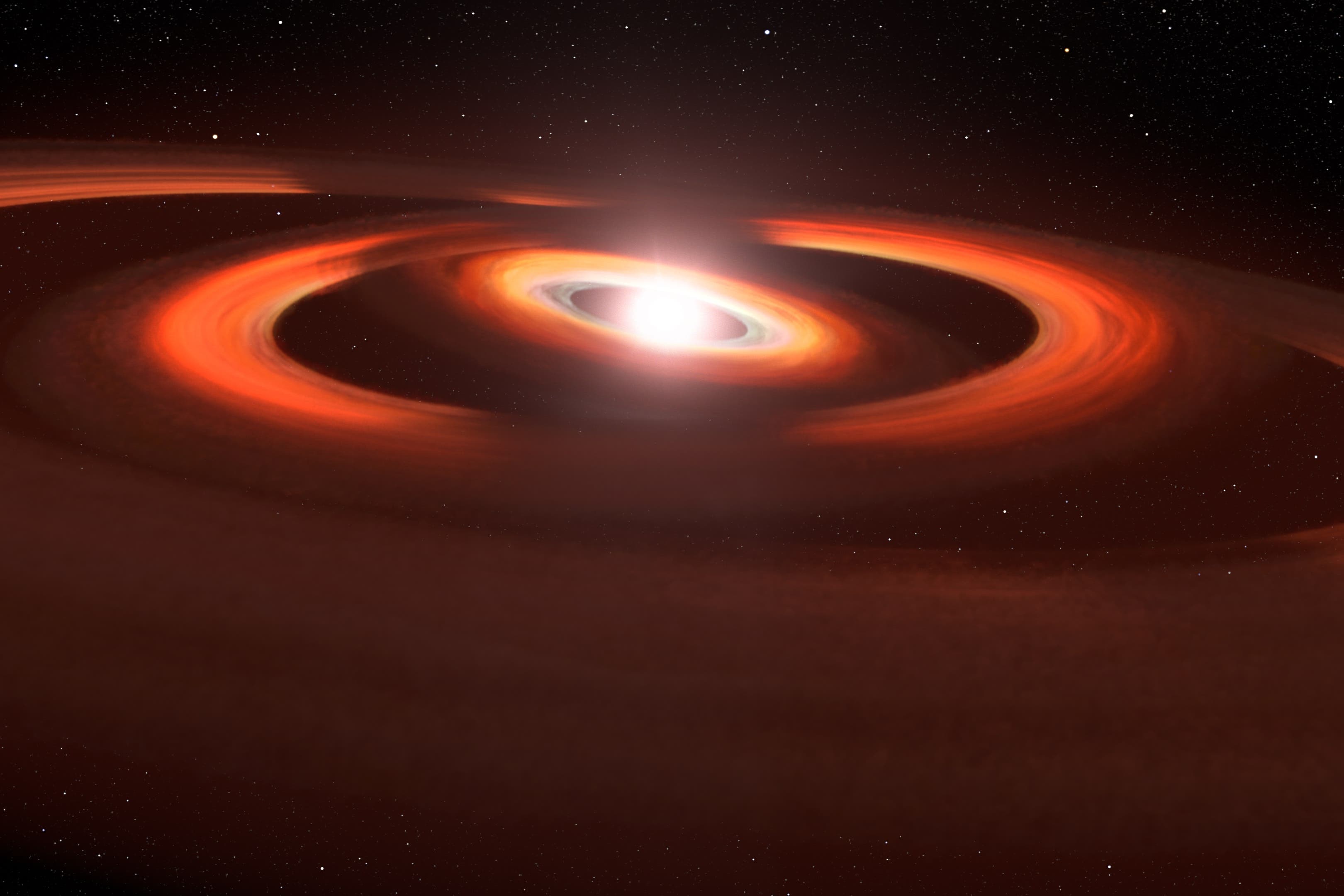Astronomers ‘find evidence of two planets under construction in distant star’
These unseen newborn planets are stirring up dust around TW Hydrae about 200 light years from Earth.

Astronomers believe they have found evidence of two planets under construction in a distant young star around 200 light years away from Earth.
Scientists have spotted two shadows in a disk of gas and dust surrounding TW Hydrae, thought to be cast by two smaller disks nestled inside the star system.
These two disks are believed to be evidence of a pair of planets under construction.
The researchers said the findings, published in The Astrophysical Journal, give insight onto how Earth and other planets in the solar system may have looked when they were forming about 4.6 billion years ago.
TW Hydrae is a red dwarf star less than 10 million years old.
Red dwarfs are the smallest – less than half the mass of the Sun – and the most common type of star in the Milky Way.
The researchers analysed data captured by the Hubble Space Telescope and found two shadows in the gas-and-dust disk of the TW Hydrae star system.
The first shadow was spotted in observations from 2016 while the second shadow appeared five years later, puzzling astronomers.
Dr John Debes, an astronomer at the Space Telescope Science Institute in the US, who is also the principal investigator and lead author on the paper, said: “We found out that the shadow had done something completely different.
“When I first looked at the data, I thought something had gone wrong with the observation because it wasn’t what I was expecting.
“I was flummoxed at first, and all my collaborators were like: what is going on?
“We really had to scratch our heads and it took us a while to actually figure out an explanation.”
The researchers think the shadows are being cast by two misaligned disks, inclined about five to seven degrees relative to the plane of the outer disk.
The misalignment is believed to be caused by the gravitational pull of two planets in slightly different orbital planes.
Dr Debes said: “It does suggest that the two planets have to be fairly close to each other.
“If one was moving much faster than the other, this would have been noticed in earlier observations.
“It’s like two race cars that are close to each other, but one slowly overtakes and laps the other.”
TW Hydrae is then likely hiding two planets on misaligned orbits, continuing the mystery of this planet-forming disk
Planets in the solar system also have orbital planes that vary in tilt by a few degrees from each other, the researchers said.
TW Hydrae gives astronomers a ringside seat to how our solar system may have looked during its formative years, they added.
The suspected planets are located in a region roughly the distance of Jupiter from the Sun, the scientists said, and the shadows complete one rotation around the star about every 15 years.
Dr Debes added: “This is right in line with typical solar system-style architecture.”
The researchers said the outer disk also has a curious gap at twice Pluto’s average distance from the Sun, which may be possible evidence of a third planet in the star system.
However, they added any inner planets would be difficult to detect because their light would be lost in the glare of the star and the surrounding dust would dim their reflected light.
Study author Rebecca Nealon, assistant professor in physics at the University of Warwick, said: “The changing shadows in TW Hydrae represent a special challenge for theorists.
“But our models were able to show that the most probable explanation is these two inclined disks that cast moving shadows.
“TW Hydrae is then likely hiding two planets on misaligned orbits, continuing the mystery of this planet-forming disk.”